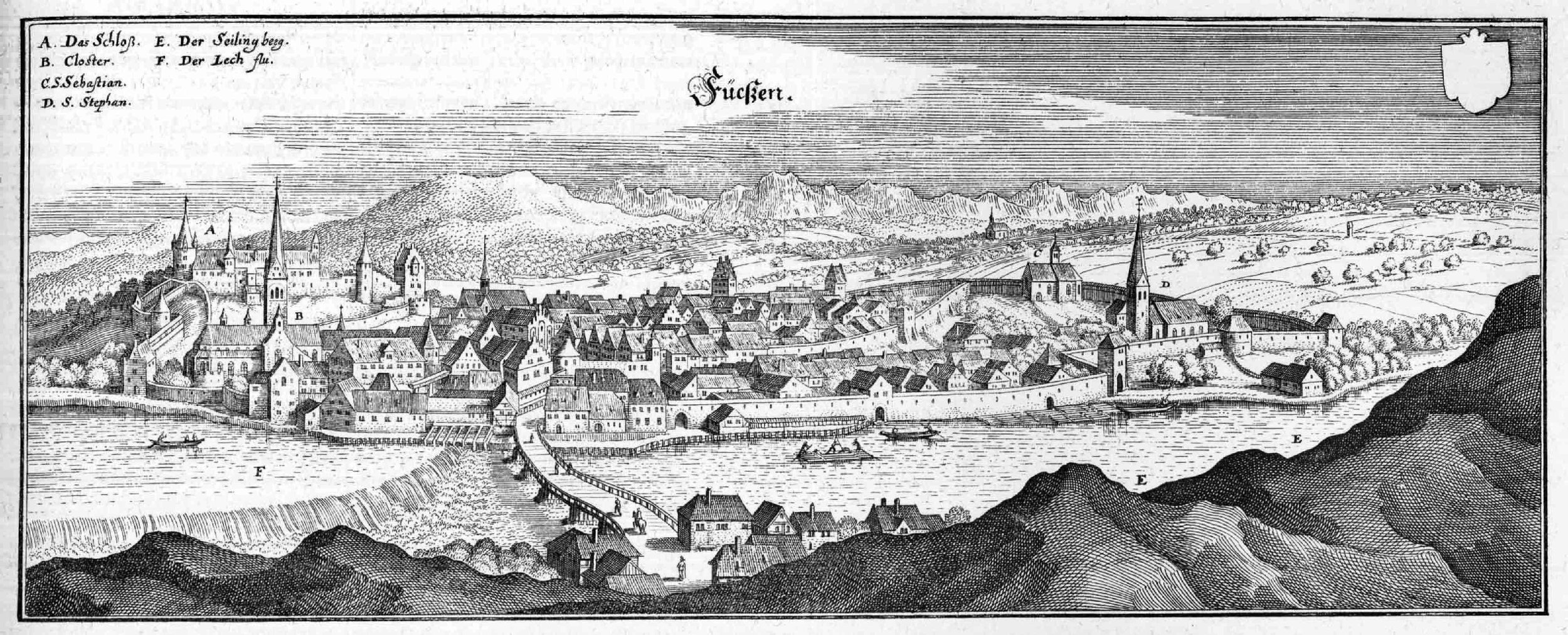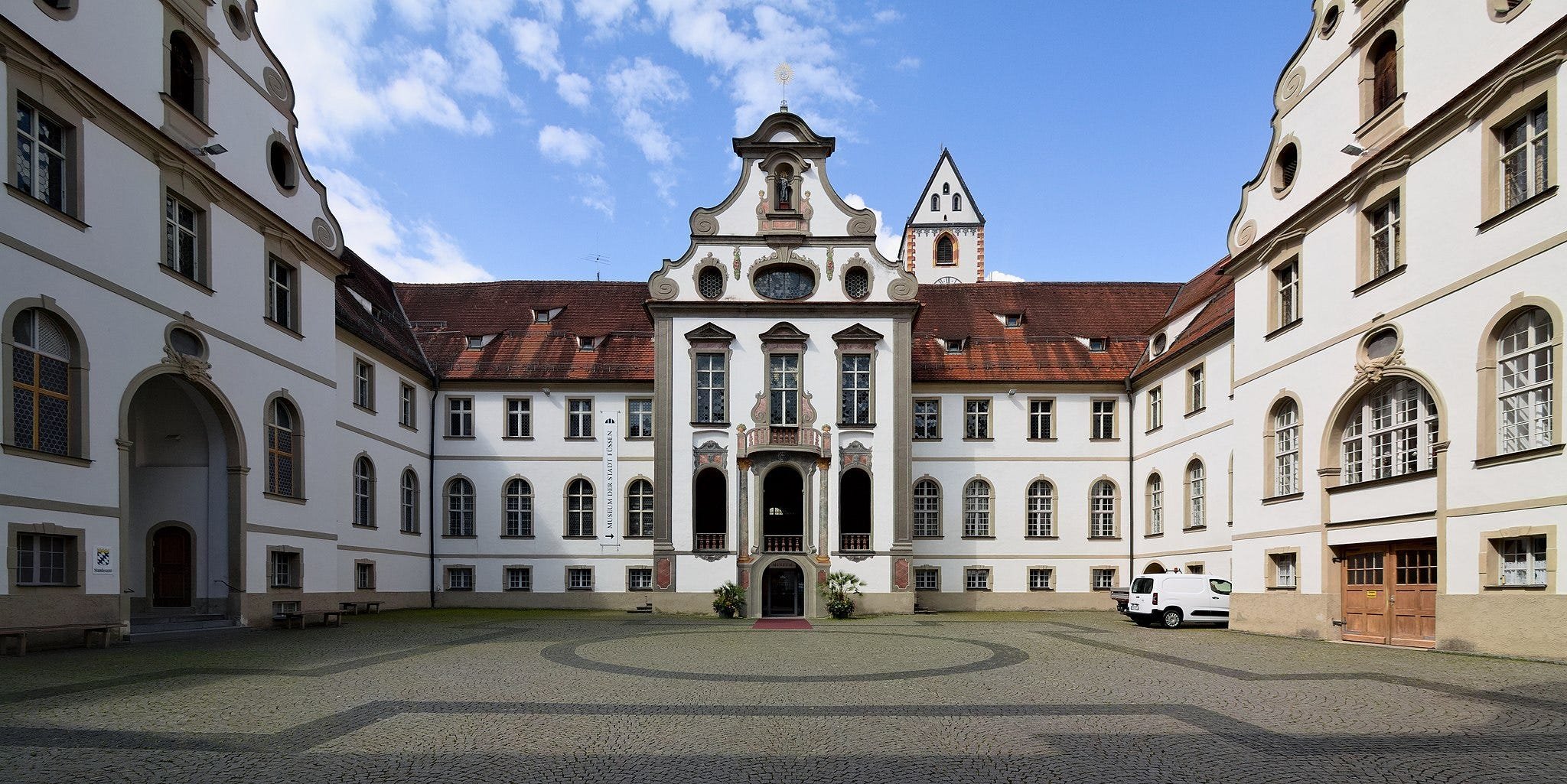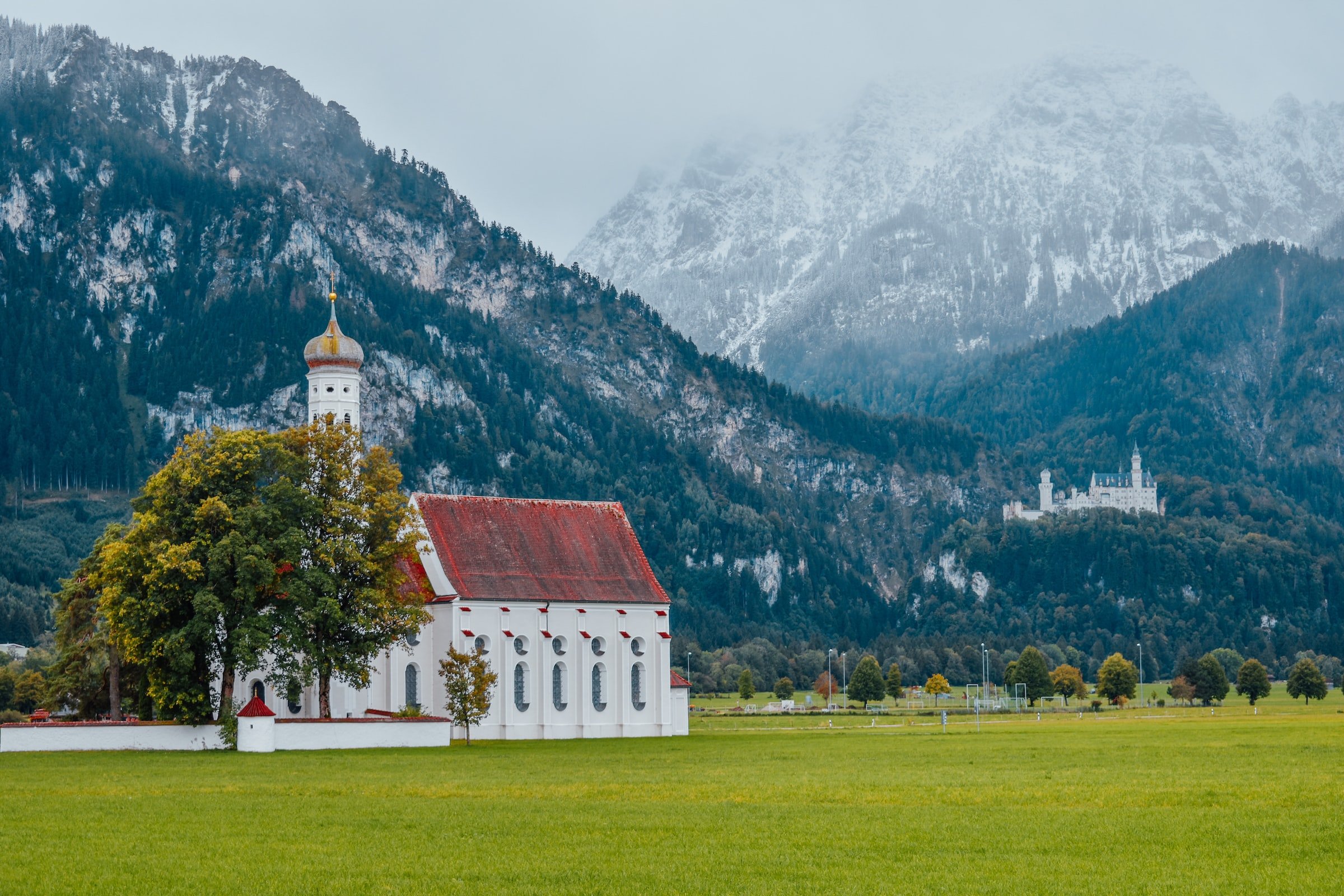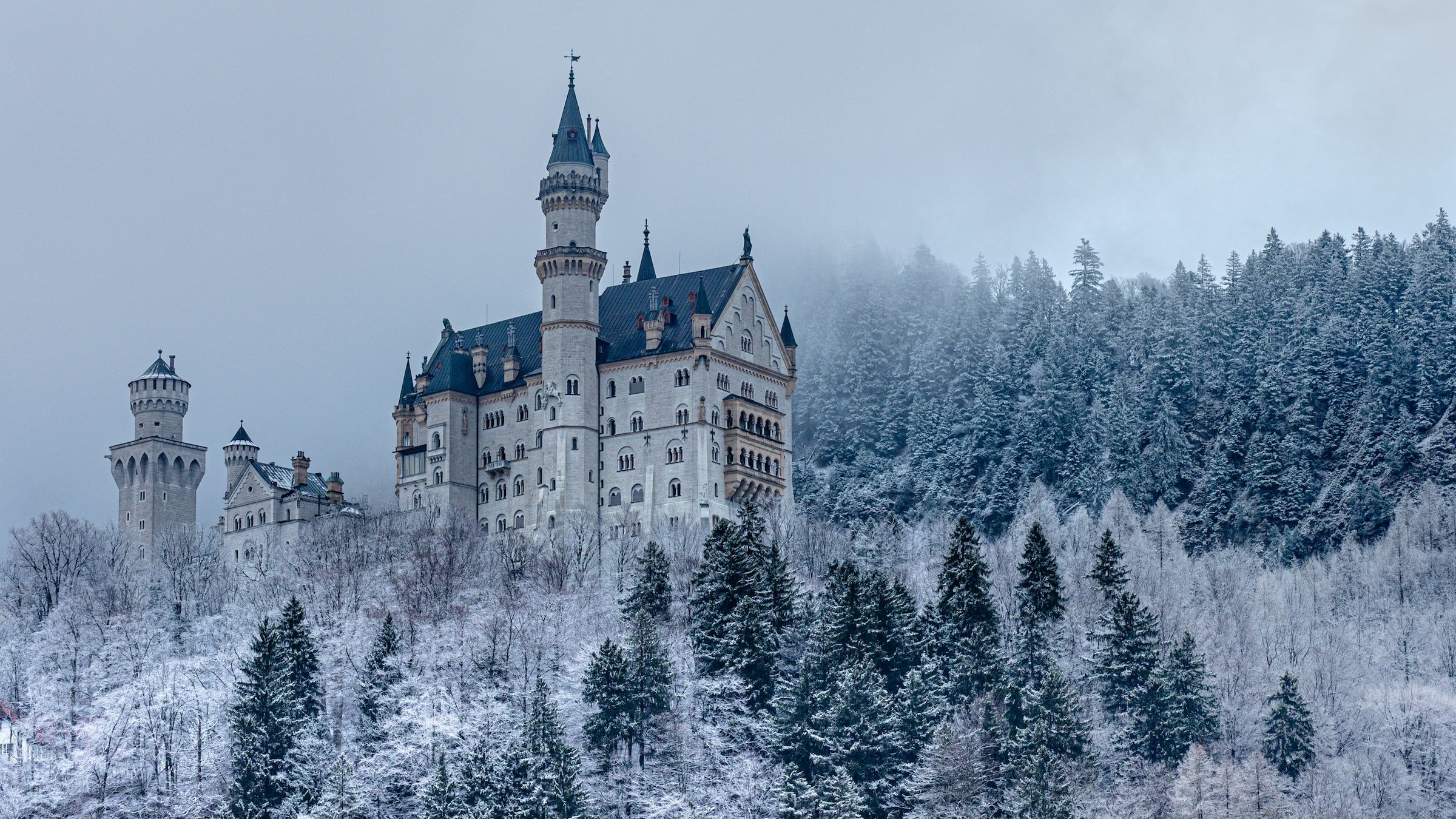Bavarian Alps—3 Historical Places to Visit
Origins: The Celts and the Romans
At the southern end of Germany’s romantic road and the foothill of the Alps is Füssen, a town with a population of around 15k.
Originally settled by the Celts in the first century BC, the Romans took over Füssen just over a hundred years later. They built the roman road, Via Claudia Augusta, an important trade route over the Alps. And under the reign of Marcus Aurelius, troops of the Roman Imperial army (Legio III Italica) were stationed here.
This Roman Imperial army was still active as late as 420 AD.
Until they were overcome by Germanic tribes in the 5th century. The larger area of Bavaria gets its name from the Germanic tribe (Baiovarii) that settled this territory. It became the Duchy of Bavaria in the 6th century.
Although a hint of Christianity remained from late Roman times, it wasn’t until the 7th and 8th centuries when Bavaria was Christianized by Irish and Scottish monks.
And it’s during this time of Christianity that brings us to our first building.
17th century engraving of Füssen by Matthäus Merian
1. St. Mang’s Abbey
The 8th century Benedictine missionary saint, Magnus of Füssen, originally built a cell and oratory here on this site in Füssen.
And it was over this original site, that the 9th century St. Mang’s Benedictine Abbey was founded by the Prince-Bishops of nearby Augsburg. Bavaria was incorporated into the Holy Roman Empire in the 10th century. This abbey remained politically important for the nearby Prince-Bishops of Augsburg and the Holy Roman Empire.
It wasn’t until the 17th century that the abbey received a Baroque transformation into a grand complex.
St. Mang’s Abbey by Johannes Robalotoff, CC BY-SA 3.0 DE
Based on Venetian models, it housed many relics and included frescoes throughout the entire church. In 1802, following the Napoleonic wars, the abbey was secularized. It’s now used as a town hall and museum.
A little over a hundred years later a missionary saint from farther afield stopped 5km east of here to spread his message. This brings us to the second to last stop on the romantic road in a town called Schwangau, and our second building.
2. St. Coloman’s Church
It all starts with an account from 1017.
"On the border between the Bavarians and the Mararians, a pilgrim named Colomanus is captured by the locals as if he were a spy"
5 years earlier, Coloman, the Irish nobleman began a pilgrimage to Jerusalem.
Near Stockerau, Austria he was captured and suspected of being a spy. He was convicted and hanged on July 17, 1012. But for 18 months, his body failed to decay and Coloman was deemed incorruptible.
Miracles soon followed and were contributed to Coloman and he was made a martyr and given Sainthood.
On October 13, 1014 the now Saint Coloman was taken to Melk Castle (later Melk Abbey) and his sarcophagus can still be seen in the Melk Basilica today. He became the first patron saint of Austria for a long period including under the Hapsburg dynasty. Many churches in Austria, Bavaria, and Hungary were named in honor of him.
Including this church, St. Coloman's Church in a field amongst the backdrop of the Bavarian alps in Schwangau.
It is said that St. Coloman rested and preached at this very site on his own pilgrimage before his tragic fate. And a small church was built in honor of him in the 14th century. It was such a popular site for pilgrims that a larger gothic church was built in the 15th century.
And such a popular site still that in 1670 an even larger baroque church was planned.
St. Coloman’s church and a distant Neuschwanstein - @nikolasvako Unsplash
This is what stands today and it's a masterpiece of early Baroque architecture. St. Coloman's church unifies both the built and natural environment with baroque splendor and rural tradition. Today St. Coloman's day is celebrated on the Sunday before October 13th every year.
Where in front of the church open-air mass takes place with over 200 horses and their riders.
Traveling just 3km southwest of St. Coloman’s church is the site of our third building the fairytale castle itself. And it is during this time after the dissolution of the Holy Roman Empire in 1806 by the Napoleonic wars, Bavaria became an independent Kingdom.
3. Neuschwanstein Castle
In 1868 the castle begins to take shape in a letter to a man King Ludwig II admired, the German composer Richard Wagner.
Ludwig II wrote, "It is my intention to rebuild the old castle ruin... in the authentic style of the old German knights' castles." A year prior, Ludwig II had taken a trip to Wartburg castle (Germany) and Château de Pierrefonds (France).
Taking inspiration from both he created Neuschwanstein as a retreat for himself in a romantic version of the Middle Ages. The style is Historicism, a revival of styles of the past. And coupled with the Romantic movement of the late 1800s with a strong preference for medieval style.
King Ludwig II borrowed from medieval styles and others to create Neuschwanstein. During the construction of this castle Bavaria joined the German Empire in 1871.
Neuschwanstein Castle - @lanju_fotografie Unsplash
With most of the castle in the Romanesque style and some parts Gothic. Other parts are Byzantine and an unfinished part of the castle was to be Art Nouveau. The cost was equivalent to €47 million today.
Why was the castle left unfinished?
Originally funded by his personal fortune but when he ran out of personal funds King Ludwig II opened up multiple credit lines. Even after the credit lines, he still needed more funds. He asked the Bavarian Parliament to help and he was denied.
In June of 1886 he was deposed by the Bavarian government and deemed 'mentally ill'.
A few days later (June 13th) he was put under supervision. Both Ludwig II and his supervisor died, some say under suspicious circumstances. Others say he drowned.
What happened to the castle?
Construction continued for the next few years until the family of Ludwig II decided to halt building. The castle was left unfinished. And today, you can join one of the 1.5 million visitors annually that visit this (still unfinished) romanticized version of a Knight's castle.
Present Day
With Celtic beginnings the Bavarian Alps are now part of the state of Bavaria in the Federal Republic of postwar Germany (since 1949). Bavaria retains its unique culture and customs and claim to be Bavarians first, Germans second. It remains predominantly Catholic.
Deep dives
To learn more about the Ludwig II of Bavaria check out The Swan King Ludwig II of Bavaria by Christopher McIntosh.
And for history of the German Empire check out Blood and Iron: The Rise and Fall of the German Empire 1871-1918 by Katja Hoyer.
*As an Amazon Associate I may earn a small commission from qualifying purchases at no extra cost to you.





